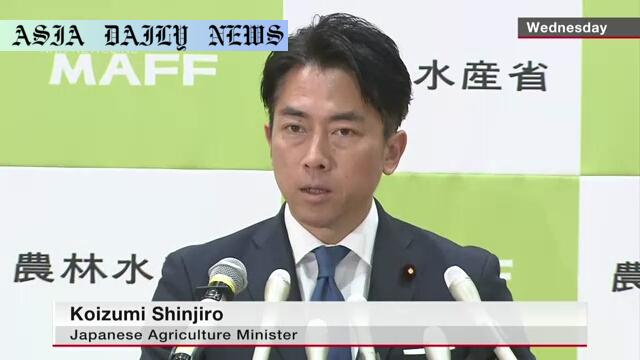Rice prices soar in Japan, prompting the government to pivot to discretionary contracts for selling rice reserves.
The Japanese government plans to shift the sale of rice reserves from auction-based models to discretionary contracts.
The move seeks to address skyrocketing rice prices but raises concerns about selection processes and legal issues.
Farmers express mixed emotions, balancing hope for policy reforms with fears over stability and future market trends.
Long-term challenges include a declining farming population and stagnant productivity within the rice farming sector.

Addressing Skyrocketing Rice Prices
Japan is taking significant strides to address the increasing costs of rice, an important national staple. Recently, the new Minister of Agriculture, Koizumi Shinjiro, announced plans to overhaul the methods used for selling the country’s reserve of rice stocks. Historically, rice reserves have been sold through competitive auctions, where the highest bidders secure the product. However, this practice has inadvertently sustained or even escalated rice prices, affecting consumers and farmers alike. With the surging costs becoming unsustainable, the government now pivots to a system of discretionary contracts to make the process more adaptive.
Discussing this measure, Minister Koizumi canceled a scheduled auction set for next week, signaling a departure from longstanding practices. Instead of competitive bidding, officials will focus on forming agreements through discretionary contracts. While this approach holds potential for lowering prices and fostering market stability, challenges abound. These include determining which contractors qualify under the new system, setting fair pricing mechanisms, and addressing potential legal implications.
Balancing Market Reforms with Farmers’ Concerns
Feedback from key stakeholders, particularly farmers, highlights the mix of optimism and apprehension surrounding these policy changes. Many rice farmers view Koizumi as a knowledgeable figure, given his tenure overseeing the LDP Agriculture and Forestry Division. Seki Takashi, a farmer, expressed confidence in Koizumi’s ability to craft policies that not only address the present challenges but also provide a hopeful vision for the future.
However, other farmers voice concerns about the uncertainty such reforms might bring. Hata Shinichi emphasized the need for measures that stabilize prices over a longer timeframe, particularly in a volatile market. Short-term dips in prices, while beneficial for consumers, could threaten farmers’ livelihoods if not managed carefully. Critics argue that while shifting to discretionary sales allows flexibility, it introduces risks if price-setting remains inconsistent, potentially hurting producers’ profitability.
Mid-to-Long-Term Challenges
Beyond pricing reforms lies the broader issue of Japan’s aging and shrinking farming population. Without concerted efforts to boost productivity and attract younger generations to farming, the sector risks stagnation. Technologies and innovations in agriculture have struggled to gain sustained traction, compounding these demographic challenges. If policymakers fail to address these issues, Japan’s agricultural self-sufficiency could be at risk in the future.
Farmer Sasaki Takayuki noted his expectation for Koizumi to leverage his relative youth and political energy to push through necessary changes. Tackling both the immediate price concerns and long-term sustainability will require coordinated efforts among lawmakers, the farming community, and the broader agricultural supply chain. Policies focusing on investment in farming technologies and education could hold the key to reinvigorating Japanese agriculture.
Path Forward for Japanese Agriculture
The proposed reforms exemplify a broader need for adaptive policymaking within Japan’s agricultural landscape. As the nation seeks economic resilience in staple products like rice, it must strike a delicate balance between affordability for consumers and feasibility for producers. Bridging these competing interests will be vital for preserving the cultural and economic importance of rice farming in Japan.
As Japan ventures into new strategies, full transparency and collaboration will be paramount. Engaging stakeholders across all levels, coupled with introducing incremental yet impactful reforms, could establish a blueprint for other Asian economies grappling with similar challenges. While success is not guaranteed, these steps reflect a necessary evolution in the face of both domestic and international pressures shaping Japan’s agricultural future.



Commentary
Rethinking Traditional Agricultural Practices
The Japanese government’s decision to reevaluate how rice reserves are sold reflects a broader realization that traditional methods may no longer suit contemporary challenges. Competitive bidding, while efficient in theory, often only benefits a select group of buyers, leaving both producers and consumers vulnerable to price volatility. By exploring discretionary contracts, the government acknowledges the need to make agricultural markets more adaptive and fairer.
The Significance of Balancing Stakeholder Interests
What stands out is the government’s attempt to balance several competing priorities. On one end, consumers lament high rice prices, but on the other, farmers remain concerned about maintaining their livelihoods. Short-term price interventions must not come at the expense of long-term sustainability. For these reforms to succeed, policymakers need to create a transparent framework that ensures mutual benefits for all parties involved.
Future Implications for Japanese Farming
Addressing rice prices is just the tip of the iceberg for Japanese agriculture. The sector faces deeper challenges, such as an aging workforce, lack of interest among young people, and stagnant productivity. While Koizumi’s initiatives may provide temporary market relief, achieving long-term reform requires tackling these systemic issues head-on. By investing in technological advancement and encouraging agricultural education, the government can help safeguard the future of farming in Japan.
As a consumer-driven society, Japan has a vested interest in ensuring affordable staple goods. But the government must not overlook the human capital required to sustain such markets. Moving forward, policies that integrate both economic and social dimensions will be key to fostering resilience within the agricultural sector.